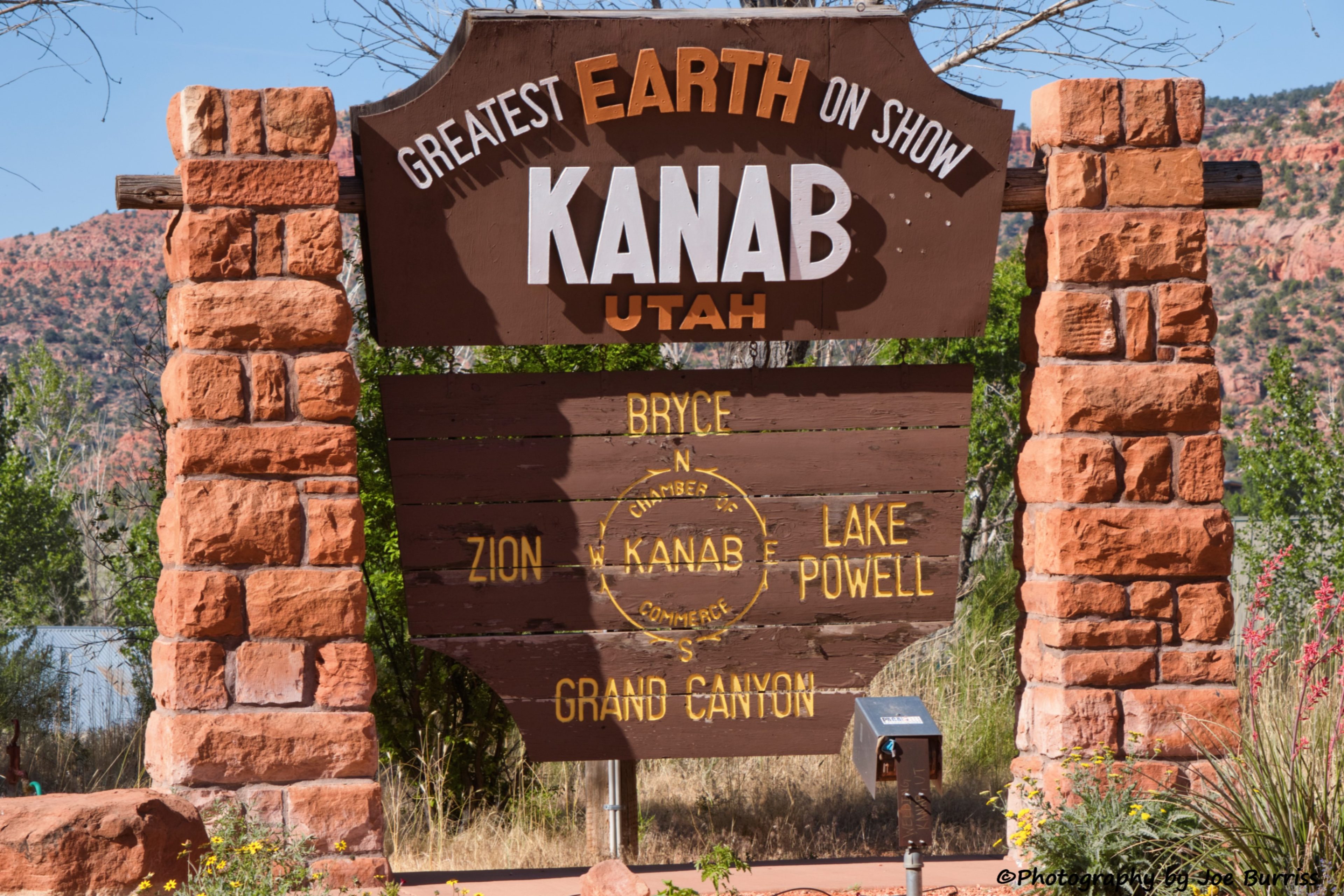
Kanab is a small town in southern Utah known for ranching and outdoor recreation. It also has a substantial history with the film industry, often called “Little Hollywood”. Movie and TV show production had been a big industry up until about 2000. Gunsmoke, The Outlaw Josey Wales, The Lone Ranger, Planet of the Apes, and the Flintstones are among the dozens of shows or films shot in the area. Not many of the film industry sets remain and we did not try and visit those that do as we had a difficult time finding out where they are.

Now on to outdoor recreation. Just north of town is a spectacular slot canyon, Red Canyon AKA Peek-a-Boo. The trailhead parking is right off US 89. From there it is a tough 4 miles on narrow, winding, deep sand jeep trails to the canyon. Our dually is both too wide and too heavy in the front end to get us there without damaging the truck and/or getting stuck and spending up to $2000 to get pulled out. We hired a guide who owns a Jeep to get us there and it was a bit like an amusement park ride. Lots of bumps and tight turns. The canyon itself is about 3/4 of a mile long and is best seen between 10 am and 2 pm. In order for the beauty of the sandstone walls to come out you need to be there when sunlight reaches into the canyon.
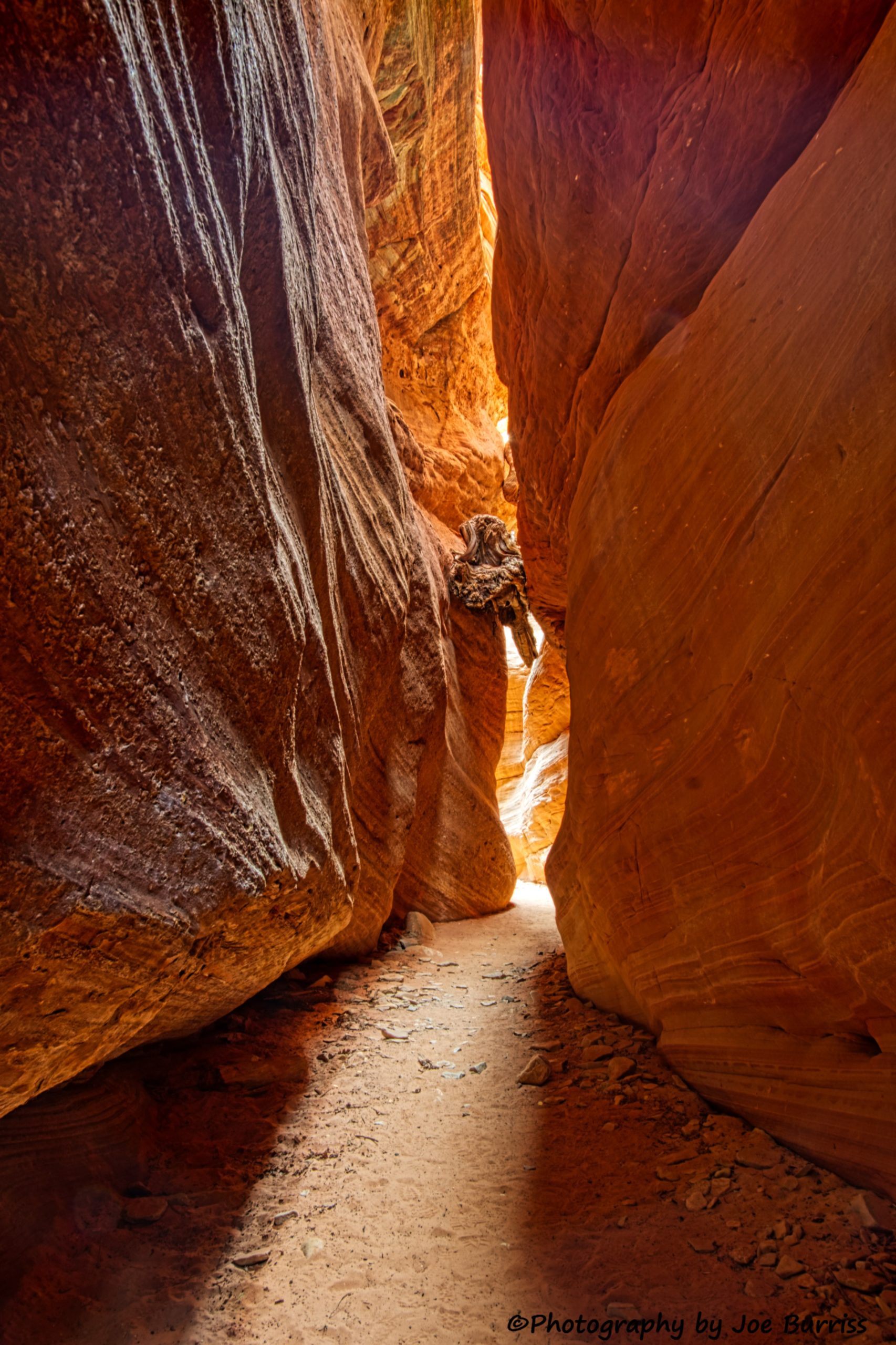
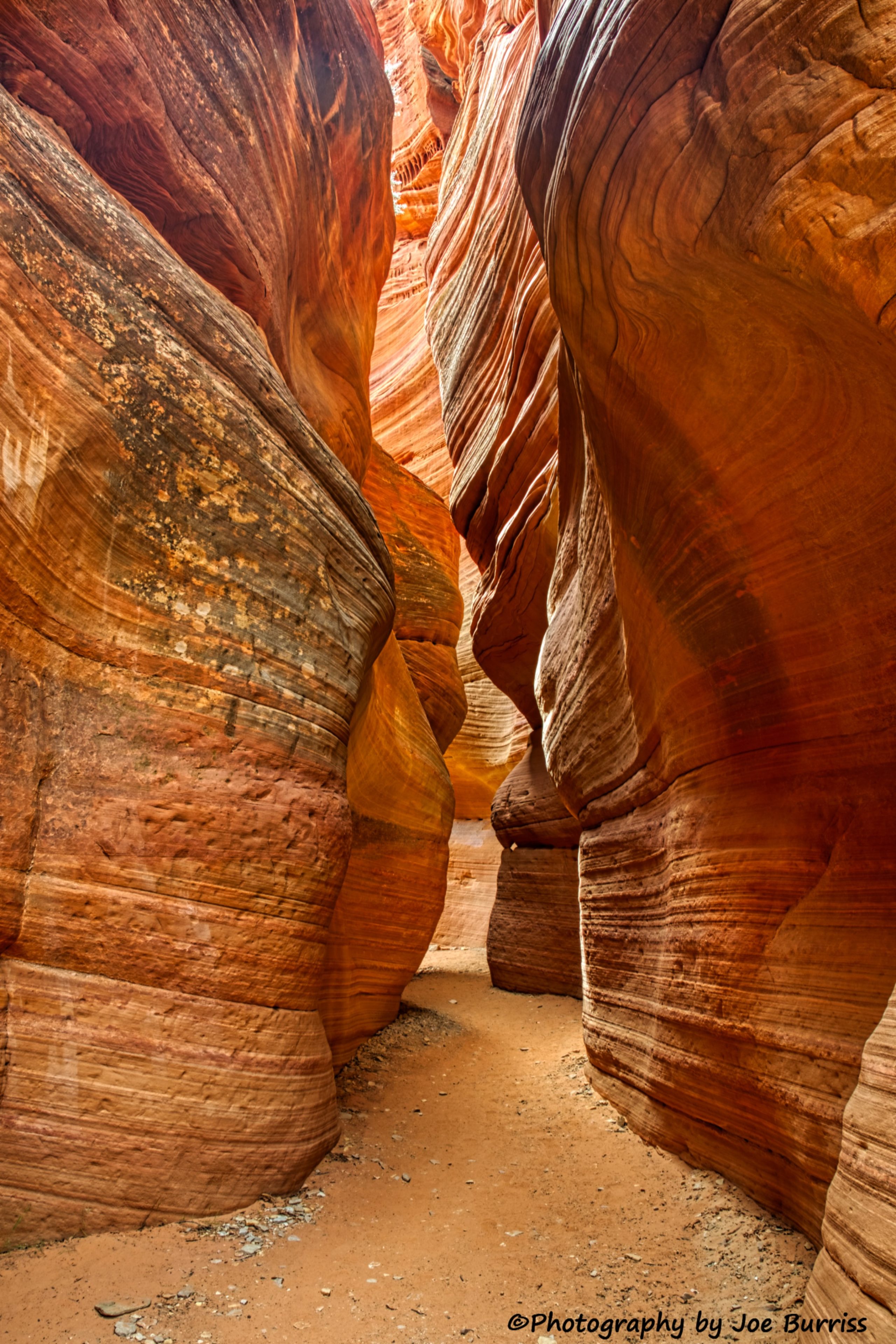
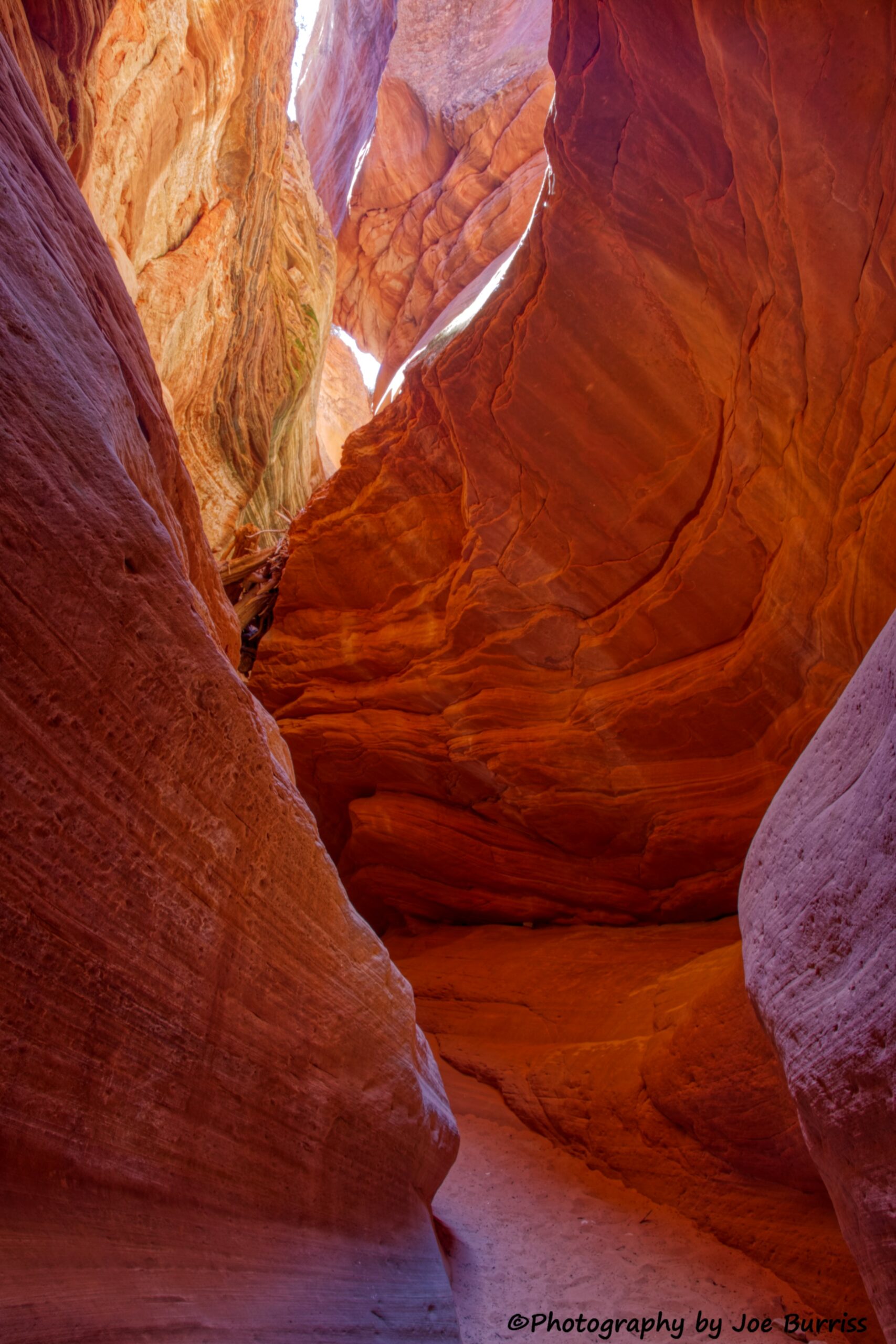

Coral Pink Sand Dunes State Park is unique due to the coral pink color of the sand and the fact that the dunes exist. The sand comes from Navajo Sandstone located south of the park. The prevailing winds that do the eroding come from the south. A notch between Moquith and Moccasin Mountains that funnels the wind creates the velocity needed to transport the sand.
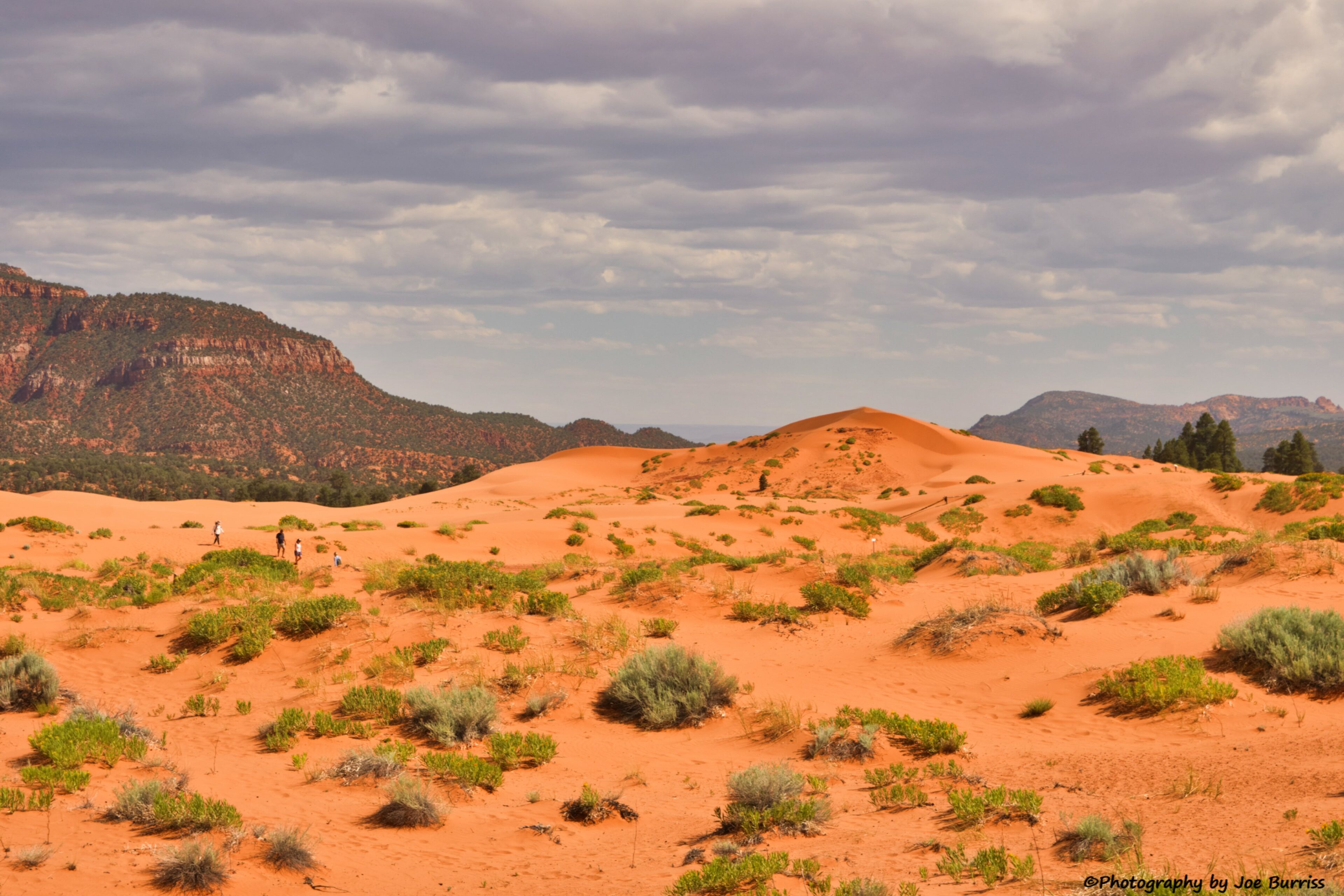
Once the sand is airborne an obstacle is needed to deflect the wind, causing the sand to fall to earth around the obstacle. A rock ledge created the first dune. Subsequent dunes are formed due to the wind deflection around the first dune, causing more sand to drop out of the air flow. Once dunes form, a process called saltation moves the sand along the dunes. Saltation is when the wind bounces appropriately-sized grains of sand along the dune. As the grains bounce they hit other grains of sand, keeping the process moving.

Just north of Kanab right on US 89 is Moqui Cave. Water sculpted this cave and it is amazingly symmetrical. Unfortunately, it is easily accessible from the highway resulting in lots of graffiti having been carved into the walls. In spite of all of this the cave is still stunning.
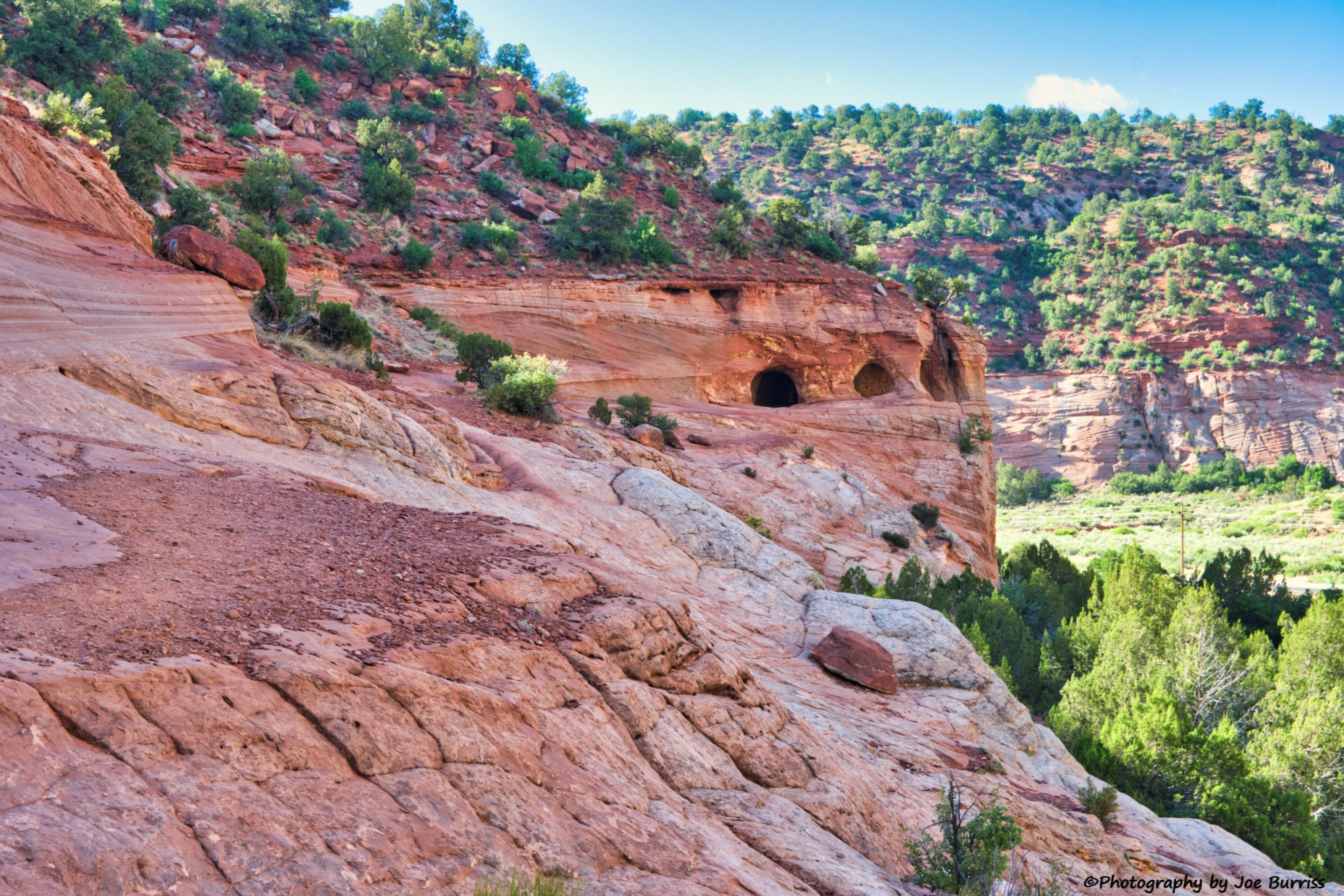
While close to the highway, the climb to the cave is a short, but very steep hike up slick rock. The day Joe went the winds increased while he was in the cave making the descent a bit dicey.
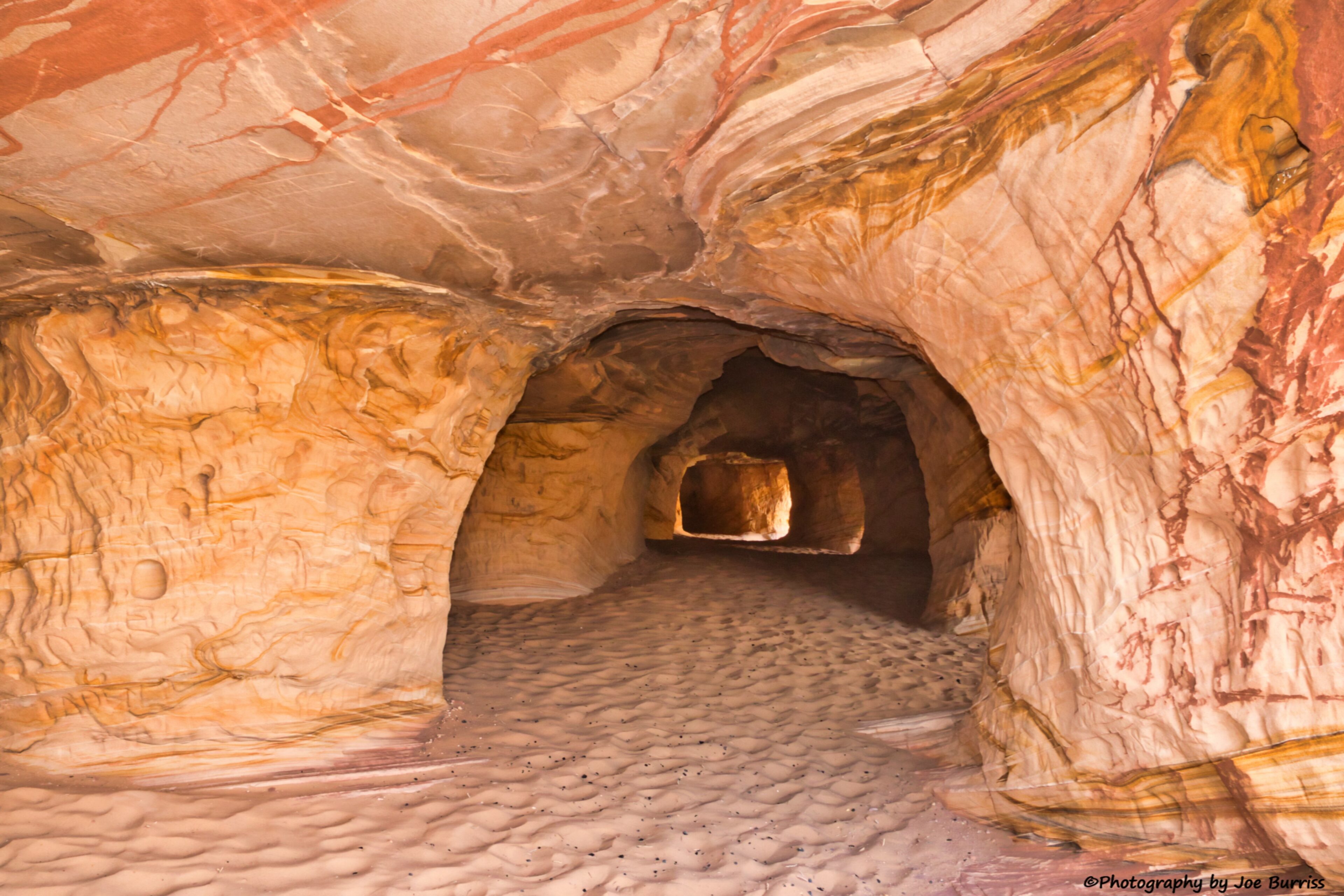
A few hundred yards off the road to Coral Pink Sand Dunes State Park, Sand Arch seemed to have been plopped down in the middle of the forest for no particular reason. It is a neat arch and takes very little time to visit.
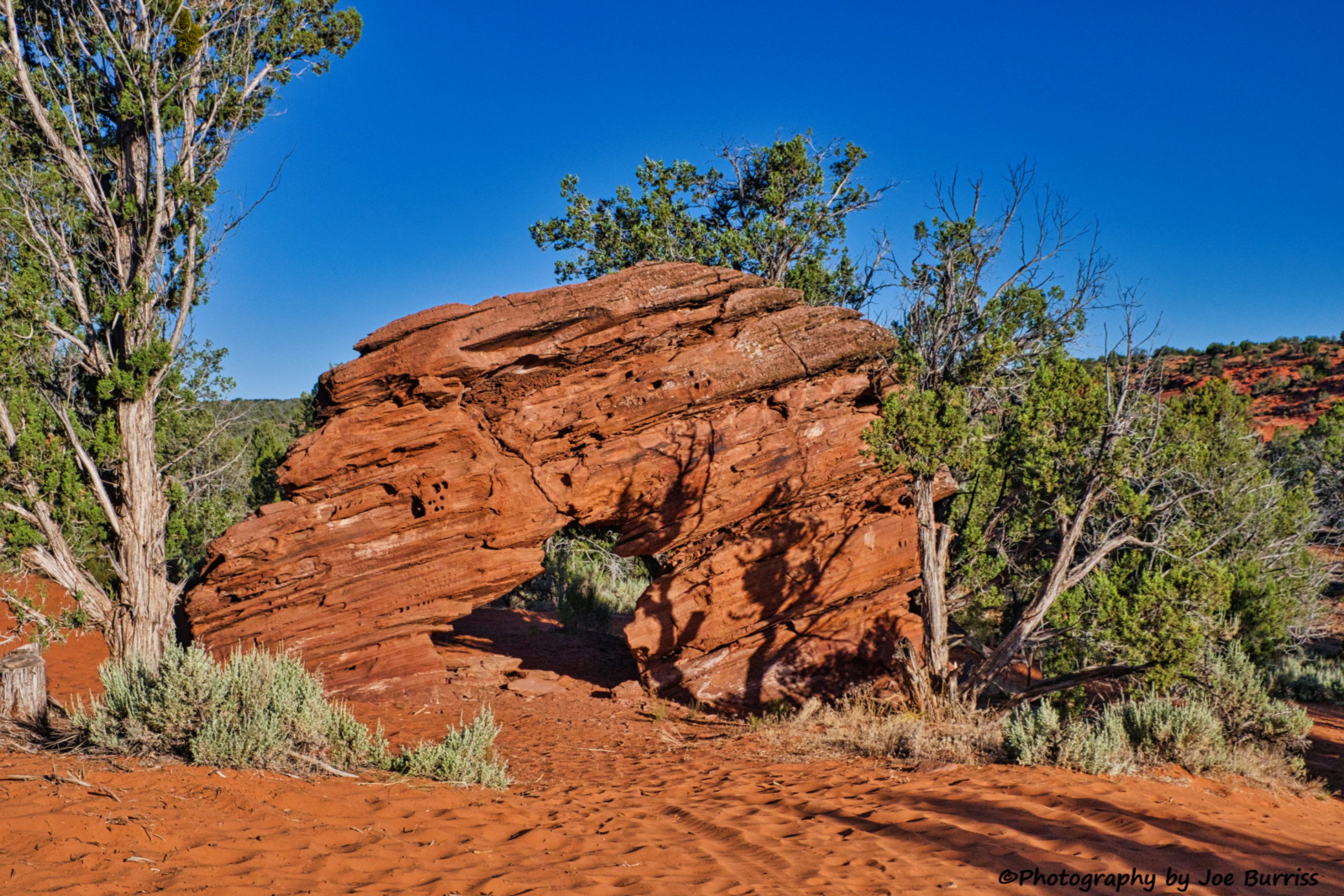
Early in June a fire started on the Kaibab Plateau. For the first few days the Mangum Fire grew to about 2,000 acres. Then we suffered through about 10 days of high, dry winds and the fire exploded to about 72,000 acres. This fire closed US 89A which is the only paved access to the North Rim of the Grand Canyon. It also closed House Rock Valley Road south of the Utah/Arizona border, resulting in access to about two thirds of Vermilion Cliffs National Monument being closed to visitors.
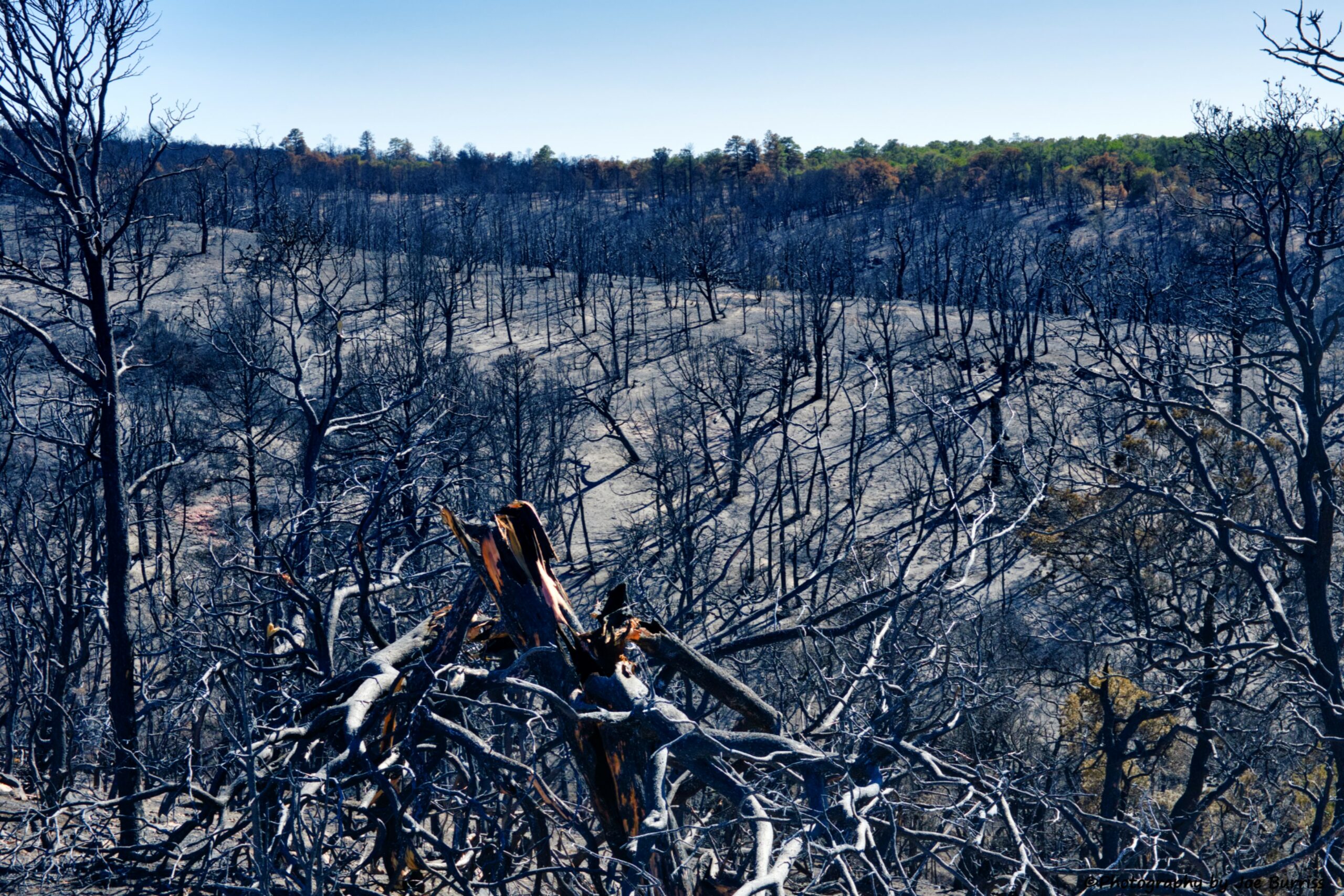

About 700 Hot Shot Fire Fighters from all over the US converged to fight the fire. It took almost three weeks, but they got it under control in time for us to visit the North Rim on June 30, the first day it was open following the fire and our last day in Kanab.
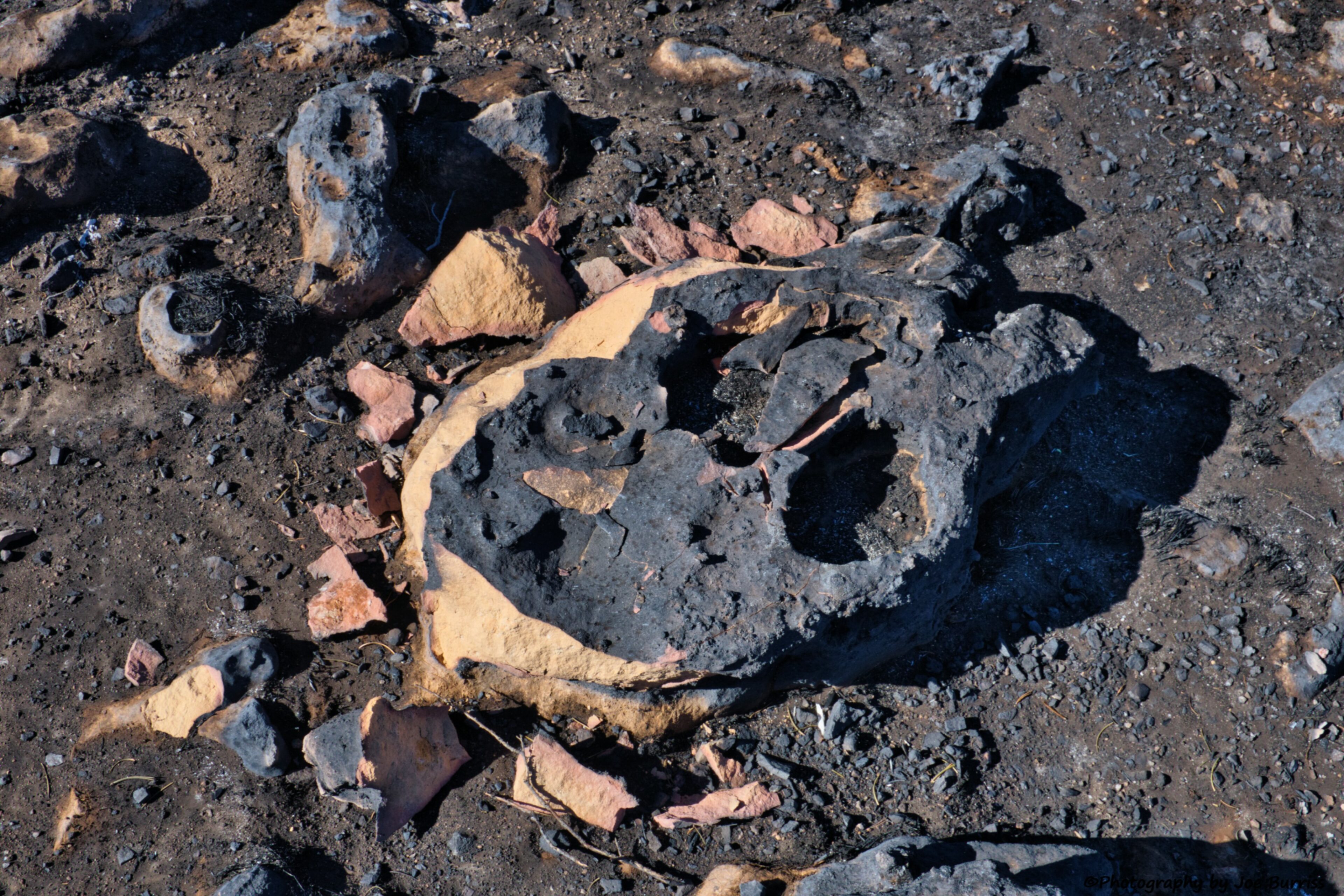
The Kanab area is a great place to stay if you want to explore Vermilion Cliffs and Grand Staircase Escalante National Monuments. If the North Rim of the Grand Canyon is your destination, Jacob Lake is a lot closer. Kanab is rural, but you can find all of the necessities right in town. During our stay in Kanab the state of Utah was just re-opening during the Covid-19 pandemic. Given that, we didn’t really explore the town to any great degree, opting instead to continue our self-isolation.
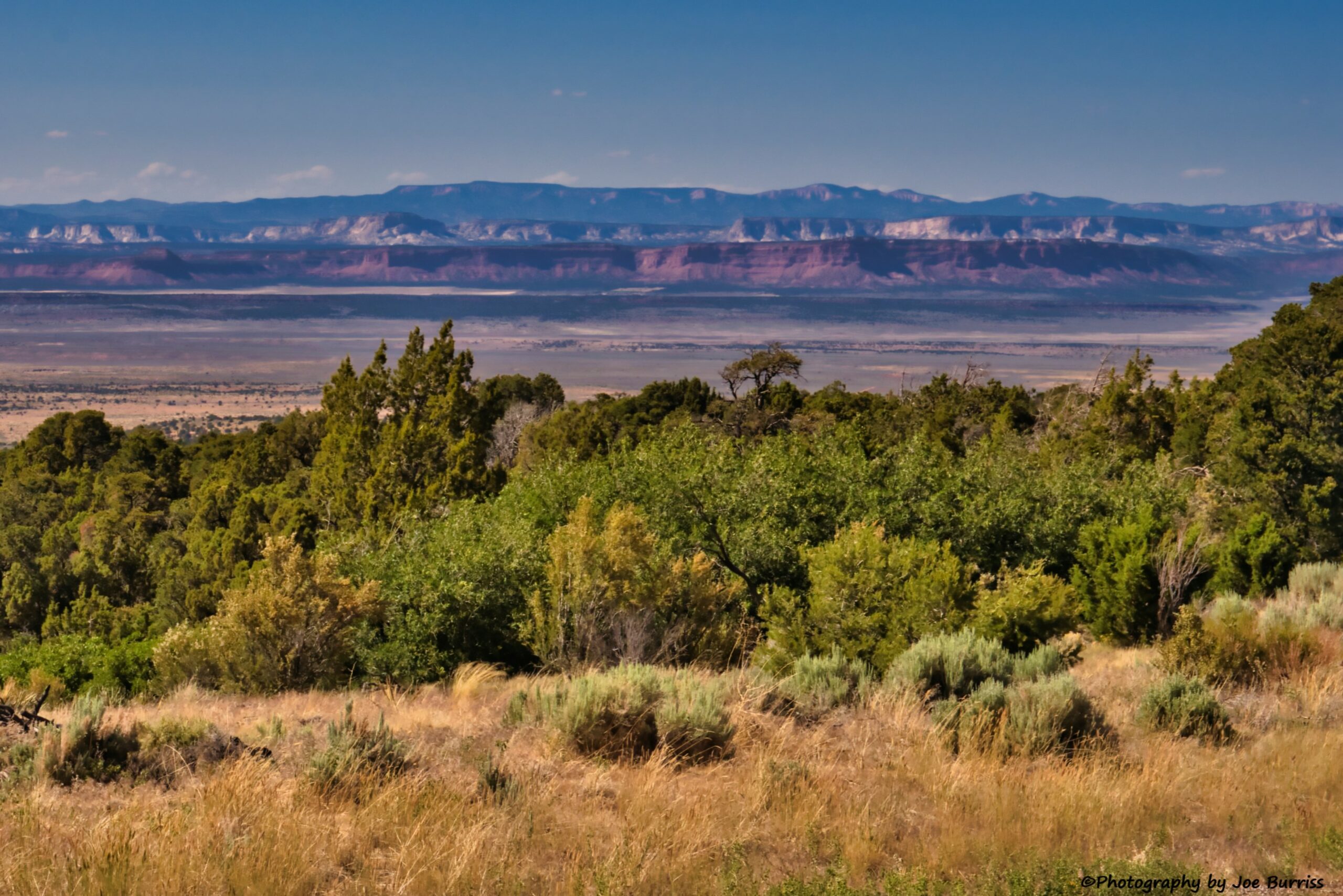
One other note: Page, AZ is also a great place to stay to see Grand Staircase Escalante and Vermillion Cliffs. However, their RV Parks cannot handle a 42-ft RV so it was not an option for us. Additionally, Page is part of the Navajo nation and due to the Covid-19 pandemic all businesses were and (as of early July) still are shut down in an effort to stop the spread of the virus.